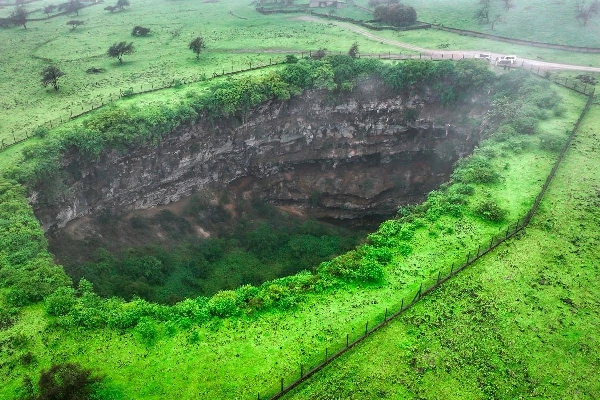Fog drifts over the green mountains of southern Oman, revealing gaping chasms that plunge hundreds of metres into the earth. These are Dhofar’s famous sinkholes — natural wonders wrapped in folklore and mystery.
The most famous, Kahf Teiq, is a giant among giants: 211 metres deep and 150 metres wide. Another popular site is the Tawi Atair sinkhole, or “Well of Birds,” named for the chorus of bird calls that echo through its walls. It is accessible via stairways and pathways, making it a favourite for visitors.
Others, like the Sheeheet pit, are far less forgiving. Located a 40-minute drive away on twisting mountain roads, it is rimmed with slippery mud. Authorities have fenced it off and posted warnings after near-accidents, including a tourist who recently slid close to the edge. Governor Marwan bin Turki Al-Said says visitor safety is being taken seriously.
The Tawi Atair sinkhole was largely unknown outside Oman until 1997, when Slovenian researchers, in partnership with Sultan Qaboos University, brought it to international attention. Since then, Dhofar’s sinkholes have become a key draw for the region’s growing tourism sector, especially during the summer when Gulf residents seek cooler weather.
Local legends say the massive pits were created by meteorites, but geologist Ali Faraj Al-Kathiri offers a different explanation — slow chemical erosion over thousands of years.
Oman received almost four million tourists in 2024, and with a plan to triple that figure by 2040 through sustainable tourism, these sinkholes are set to remain one of its most unique attractions.



